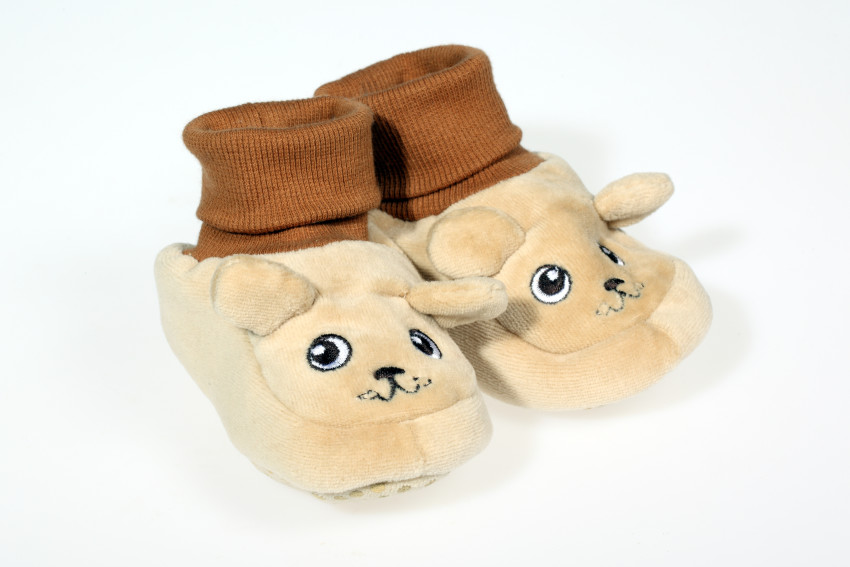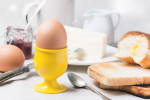Shoes for Pre-walkers, Beginning Walkers and Toddlers
It is important that parents understand that a child’s foot is not just a miniature adult foot. Shoe advice for babies and toddlers is necessary to keep in mind because their feet are still developing. Relatively soft cartilage is present and bone is still forming. Especially during the first year of your child’s life, their feet will be incredibly soft and pliable. This means that any abnormal, repetitive pressures (form a poorly fit shoe for example) can easily cause the foot to deform. The rules that you have learned about taking care of their own feet often do not translate to what is best for your children.
What are the Ideal Conditions for Your Kids’ Feet?
Children’s feet develop best when they are barefoot. Many studies show that walking barefoot early in life actually helps feet develop properly and aids in proper growth of the muscles. By giving the toes freedom to move and “grasp”, the feet naturally develop strength and coordination.
It isn’t always practical, however, to go barefoot all of the time. When walking or rough floors or outside you need to protect babies’ feet. Their soft, tender skin needs protection from the dangers of infection through accidental cuts and abrasion. This is when proper footwear becomes very important.
Proper Footwear for Pre-walkers, Beginning Walkers and Toddlers
When choosing shoes for babies, beginning walkers and toddlers, studies have clearly demonstrated that shoes should have the following qualities:
| Lightweight | The shoes should not be heavy or impede the child’s movement in any way. |
| Flexible/Soft | The shoes should not restrict important toe and foot mobility, nor should they bind the growing feet in any way. |
| Breathable | Constructed of breathable natural materials, such as leather, to promote healthy conditions around the feet. |
| Flat | The shoes should not have any arch support. They should simulate barefoot conditions. This is critical. Many parents believe that because they require arch support, their kids do too. Except in the situation where a child has a “pathologically flat foot” or is overweight (see below) there should be NO arch support in your kids’ shoes. Arch support hinders the ability of a child’s foot to strengthen naturally. |
| Smooth | The sole should be smooth (like the palm of your hand) to avoid catching on the ground. Avoid rubber soles. |
| No heel | Avoid heels. Shoes should be flat. |
General Rules on Choosing Children’s Shoes
- Children’s feet grow in spurts and require new shoes every 3 to 4 months.
- Avoid synthetics as they do not stretch and pressure from the shoe can harm a child’s feet.
- Kids’ feet sweat a lot, so the top of the shoe should be made of a breathable material, like leather or canvas.
- Children should not wear hand me down shoes. As most shoes mold to the foot, wearing hand me downs can apply abnormal force to the feet
- Shoes should be comfortable from the start. If new shoes need to be “broken in,” it means either they were not properly designed or not properly fitted for your child’s foot.
Shoe Recommendations Based on Age:
- Crib Age: A loose fitting soft bootie 1—2 years:
- Toddlers – a flexible booty or shoe with a flat stable sole 2– 3 years:
- Running age – a firmer yet still flexible bootie or shoe
- 3—4 years: a firmer shoe, bootie or possibly an athletic type of shoe.
- 4+ years: walking or athletic shoes are fine for this age group
Tips for Shoe Shopping for your Children
- Foot size increases with standing as well as with the time of day, so shop for shoes later in the day.
- Always have the salesperson measure your child’s feet.
- When being measured, the child should be standing up and putting full weight on his feet. If there is a size difference between the feet take the larger size.
- Once the shoes are on, check them for length and width. While the child is standing, check the toe box. There should be a thumb’s space between the end of the toes and the tip of the shoe. For width, check the broadest part of the foot near the ball of the foot. The shoe should neither be bulging out, nor tight. You should be able to grab a pinch of leather or canvas.
- While the child is standing, verify that the child has enough room behind their heel for you to slide your little finger. This will ensure that there is enough room in the toe to allow the foot to grow. Remember that the foot grows backward as well as forward.
- The child should try on a pair of shoes and walk about the shop for about 5 minutes. Then quickly remove the shoes and examine your child’s feet for redness. Check the small toe, the widest part of the foot near the ball and the back of the heels. Redness indicates pressure.
- Do not accept discomfort as a normal “breaking in” period. Feet could break in the process! A child may not complain about discomfort even if shoes are too tight. But if they remove shoes frequently, limp or refuse to walk in the shoes, suspect misfit. Keep in mind, too, that children’s feet have a way of growing out of their shoes.
Some great shoe brands for babies and toddlers feet Robeez, Stride Rite, Crocs, Pediped, clarks
Source: footankle.com


